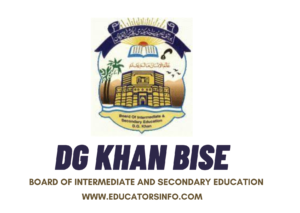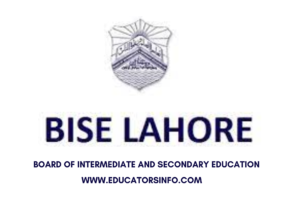
Business Policy and Strategy

Choose the Correct Option
1-The company image is a ———– factor.
a. Market share
b. Growth rate
c. Liquid assets
d. Qualitative
Ans:
2- The threat of ———- is considered a competitive force.
a. Substitutes
b. State of growth
c. Rivalry
d. Competitive strategy
Ans:
3- A resistance to change ———- from the existing perceptions, beliefs, and work habits in the organization is referred to as resource resistance.
a. Conscious
b. Arising
c. Inertial
d. Environmental
Ans:
4- ——— policy is considered to be a strategic advantage.
a. Environmental barrier
b. Resource constraint
c. Crises
d. Labor
Ans:
5 ———- of proper plans or factual information, decisions taken by entrepreneurs will be mostly based on a neutral strategy.
a. Contingency strategy
b. Ad hoc method
c. In the presence
d. In the absence
Ans:
6- A flexible strategy is suitable for ———- because the organization may prefer growth and external dependence.
a. Variety and stimulation
b. Unstable environments
c. Internal consistency
d. Power and sales growth
Ans:
7- Overall cost ———- achieves cost minimization.
a. Profits
b. Leadership
c. Risk diversification
d. Innovation
Ans:
8- ——– who propounded the TOWS matrix is Prahalad.
a. Drucker
b. Weinrich
c. Sharplin
d. Person
Ans:
9- A ———– is a company’s road map.
a. Profitability statement
b. Vision statement
c. Ethical thinking
d. Policy statement
Answer:
Choose the Correct Answer
10- Which of the following is a key element of a business strategy?
a) Monitoring progress
b) Identifying resources
c) Evaluating internal and external environments
d) Providing a detailed set of rules and procedures
Answer:
11- What is the purpose of a SWOT analysis?
a) To identify the organization’s long-term goals.
b) To identify the competition’s strengths and weaknesses.
c) To evaluate the organization’s internal and external environments.
d) To assess the success of the organization’s strategy.
Answer:
12– What is the purpose of a vision statement?
a) To provide guidance for decision-making.
b) To outline the organization’s long-term goals.
c) To identify the competition’s strengths and weaknesses.
d) To evaluate the organization’s internal and external environments.
Answer:
13- Which of the following is not a factor in the external environment that can affect an organization’s strategy?
a) Economic conditions
b) Technological factors
c) Political and legal factors
d) Employee satisfaction
Answer:
14- Which of the following is not a type of corporate-level strategy?
a) Diversification
b) Cost leadership
c) Merger and acquisition
d) Retrenchment
Answer:
15- What is a mission statement?
A) A statement that defines the purpose and customers a company serves
B) A brief statement that reflects a company’s aspirations and future
C) A statement of a company’s values and beliefs
D) A plan that outlines how a company will achieve its goals
Answer:
16– What is a SWOT analysis?
Strengths, Weaknesses, Opportunities, and Trends
B) Knesset, Opportunities, and Threats
C) Strengths, Weaknesses, Opportunities, and Threats
D) Successes, Weaknesses, Opportunities, and Trends
Answer:
17- What is business-level strategy?
A) The actions a company takes to achieve its objectives in a specific market
B) The actions a company takes to achieve its objectives in a specific industry
C) The actions a company takes to achieve its objectives in a specific sector
D) The actions a company takes to achieve its objectives in a specific field
Answer:
18- What is a corporate-level strategy?
A) The overall scope of a company’s operations, including the management of its multiple departments
B) The overall scope of a company’s operations, including the management of its multiple divisions
C) The overall scope of a company’s operations, including the management of its multiple businesses
D) The overall scope of a company’s operations, including the management of its multiple units
Answer:
19– What is the process of crafting and implementing business policies and strategies called?
A) Strategic management
B) Tactical management
C) Operational management
D) Financial management
Answer:
20- Which of the following is NOT a step in the business policy and strategy process?
A) Analysis of the external environment
B) Analysis of the internal environment
C) Implementation of strategies
D) Evaluation of employee performance
Answer:
21-Which of the following is a tool used in the analysis of the external environment?
A) SWOT analysis
B) BCG matrix
C) PESTEL analysis
D) Porter’s Five Forces model
Answer:
22-Which of the following is a type of competitive strategy?
A) Cost leadership
B) Diversification
C) Product development
D) All of the above
Answer:
23- Which of the following is a characteristic of an effective strategy?
A) It is simple and easy to understand
B) It is flexible and can be easily changed
C) It is tailored to the specific needs of the organization
D) All of the above
Answer:
24- Which of the following is a key factor in the successful implementation of a strategy?
A) Clear communication of the strategy to all employees
B) A detailed analysis of the external environment
C) A focus on short-term objectives rather than long-term goals
D) A decentralized organizational structure
Answer:
MCQ: Multi-Choice Table
| Column A | Column B |
|---|---|
| A. SWOT analysis | A. Strategic planning tool used to evaluate the internal and external environment |
| B. Porter’s Five Forces | B. Framework for analyzing the competitive environment of an industry |
| C. Concentric diversification | C. Strategy of entering a new industry related to a company’s current business |
| D. Strategic management process | D. Series of steps used to develop and implement a company’s strategy |
| E. BCG matrix | E. Portfolio analysis tool used to evaluate a company’s product line |
About Business Policy and Strategy
Business Policy refers to the overall direction, scope, and objectives of an organization over the long term. It encompasses the development of a company’s mission and vision, as well as the formulation of strategies and action plans to achieve those goals. On the other hand, Strategy is a set of actions and decisions made by an organization to achieve specific goals. It involves analyzing the company’s internal and external environment, identifying strengths, weaknesses, opportunities, and threats, and developing a plan to leverage the strengths and opportunities while mitigating the weaknesses and threats. In summary, Business Policy and Strategy are interrelated concepts that help organizations to define their direction, objectives, and action plans to achieve long-term success. The business policy sets the framework and direction for the organization, while strategy provides the action plan to achieve those objectives




















